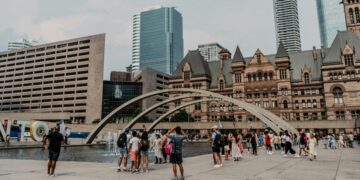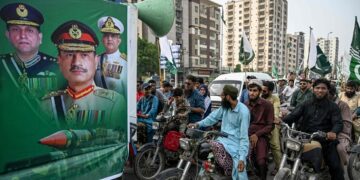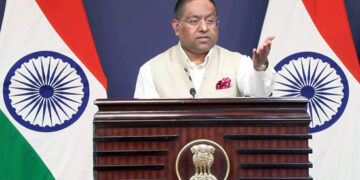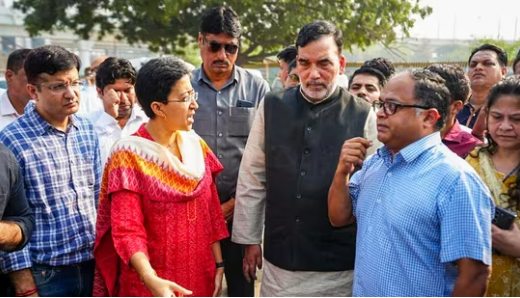Delhi’s air quality has hit alarming levels once again, with pollution levels soaring into the ‘severe’ category, leaving residents grappling with smog, breathing difficulties, and health warnings. The national capital, already notorious for its winter pollution woes, is witnessing a rapid decline in air quality earlier than usual this year.
According to the Air Quality Index (AQI) monitoring systems, several parts of the city recorded AQI levels well over 400, a mark that qualifies as ‘severe,’ putting the city on high alert for public health risks, especially for vulnerable groups such as children, the elderly, and those with respiratory conditions. The current AQI levels suggest a thick layer of smog enveloping the city, obscuring visibility and prompting the usual health advisories.
The Aam Aadmi Party (AAP)-led Delhi government has placed part of the blame for this spike in pollution levels on buses arriving from neighboring Uttar Pradesh (UP). Government officials have pointed to the large number of buses entering the city daily, suggesting that the heavy vehicular influx from UP is exacerbating the pollution crisis. This cross-border vehicular movement, coupled with the onset of stubble burning in surrounding states, is said to be a major factor in worsening the air quality in the city.
A statement from the Delhi government emphasized, “We are taking several measures to control pollution within the city, but the influx of buses from Uttar Pradesh is adding to the already high vehicular emissions in Delhi. These buses often run on outdated technology, emitting large amounts of pollutants that contribute directly to the deteriorating air quality.”
The AAP government has been actively implementing policies such as the odd-even rule, increasing the number of electric buses, and banning the use of diesel generators to combat pollution. However, officials claim that inter-state vehicular traffic remains a persistent and under-addressed issue. They have called on authorities in UP to collaborate on pollution control measures and update their public transportation infrastructure.
Experts, however, suggest that while cross-border traffic may be a contributing factor, the causes of Delhi’s pollution are multi-faceted. Other major contributors include industrial emissions, dust from construction sites, and the seasonal stubble burning in Punjab and Haryana, which are well-known triggers for the annual rise in pollution levels.
Residents have raised concerns about the adverse health effects of prolonged exposure to such poor air quality. Doctors have recommended minimizing outdoor activities and wearing protective masks to limit exposure to pollutants, while schools and offices are being urged to adapt to the worsening conditions.
As the city gears up for the upcoming Diwali festival, fears are growing that firecracker use may push pollution levels even higher. Both the Delhi and central governments are now under pressure to coordinate efforts and tackle the pollution problem before it escalates into a full-blown public health crisis.








 India
India












